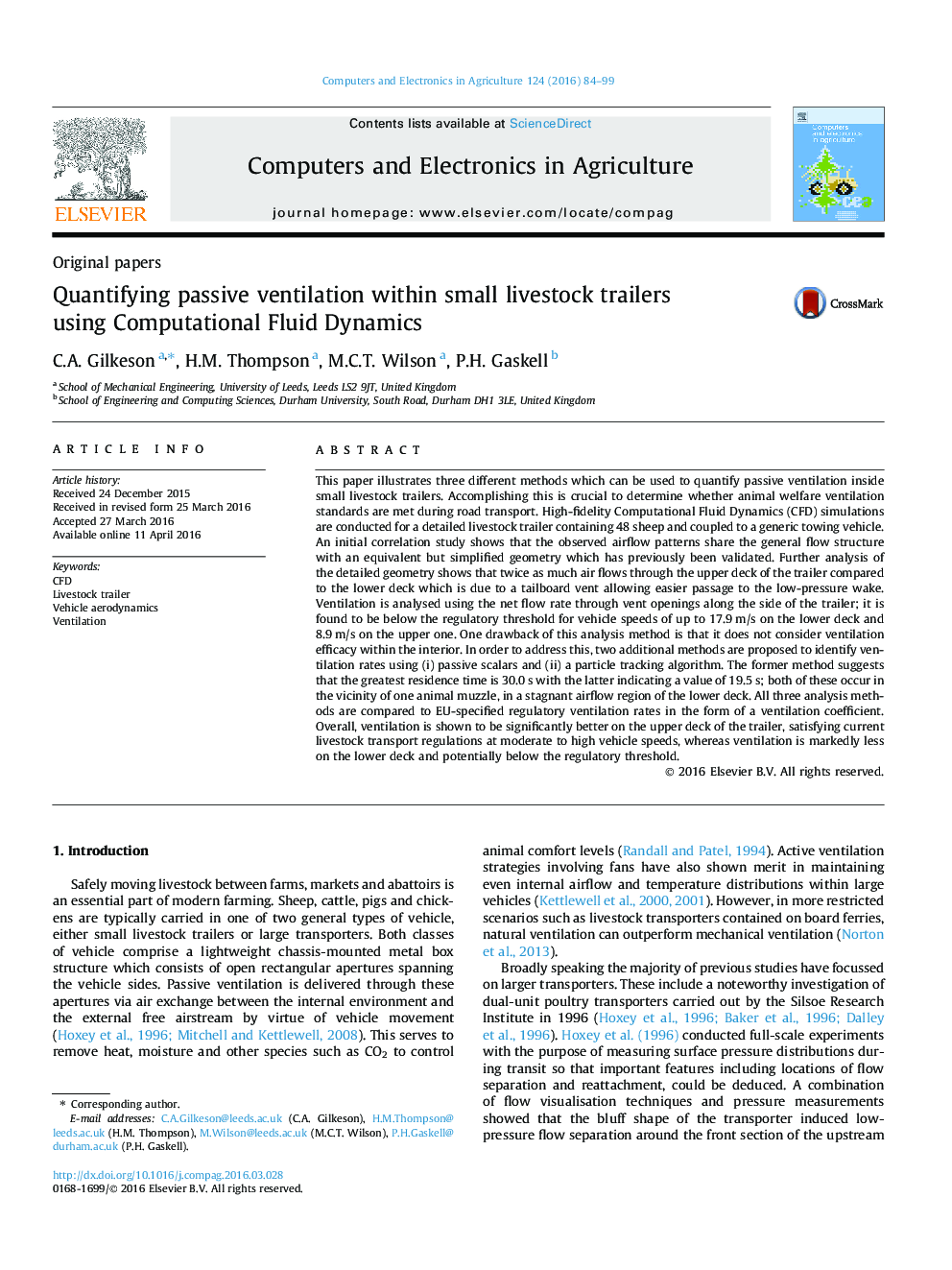| Article ID | Journal | Published Year | Pages | File Type |
|---|---|---|---|---|
| 6540381 | Computers and Electronics in Agriculture | 2016 | 16 Pages |
Abstract
This paper illustrates three different methods which can be used to quantify passive ventilation inside small livestock trailers. Accomplishing this is crucial to determine whether animal welfare ventilation standards are met during road transport. High-fidelity Computational Fluid Dynamics (CFD) simulations are conducted for a detailed livestock trailer containing 48 sheep and coupled to a generic towing vehicle. An initial correlation study shows that the observed airflow patterns share the general flow structure with an equivalent but simplified geometry which has previously been validated. Further analysis of the detailed geometry shows that twice as much air flows through the upper deck of the trailer compared to the lower deck which is due to a tailboard vent allowing easier passage to the low-pressure wake. Ventilation is analysed using the net flow rate through vent openings along the side of the trailer; it is found to be below the regulatory threshold for vehicle speeds of up to 17.9Â m/s on the lower deck and 8.9Â m/s on the upper one. One drawback of this analysis method is that it does not consider ventilation efficacy within the interior. In order to address this, two additional methods are proposed to identify ventilation rates using (i) passive scalars and (ii) a particle tracking algorithm. The former method suggests that the greatest residence time is 30.0Â s with the latter indicating a value of 19.5Â s; both of these occur in the vicinity of one animal muzzle, in a stagnant airflow region of the lower deck. All three analysis methods are compared to EU-specified regulatory ventilation rates in the form of a ventilation coefficient. Overall, ventilation is shown to be significantly better on the upper deck of the trailer, satisfying current livestock transport regulations at moderate to high vehicle speeds, whereas ventilation is markedly less on the lower deck and potentially below the regulatory threshold.
Keywords
Related Topics
Physical Sciences and Engineering
Computer Science
Computer Science Applications
Authors
C.A. Gilkeson, H.M. Thompson, M.C.T. Wilson, P.H. Gaskell,
